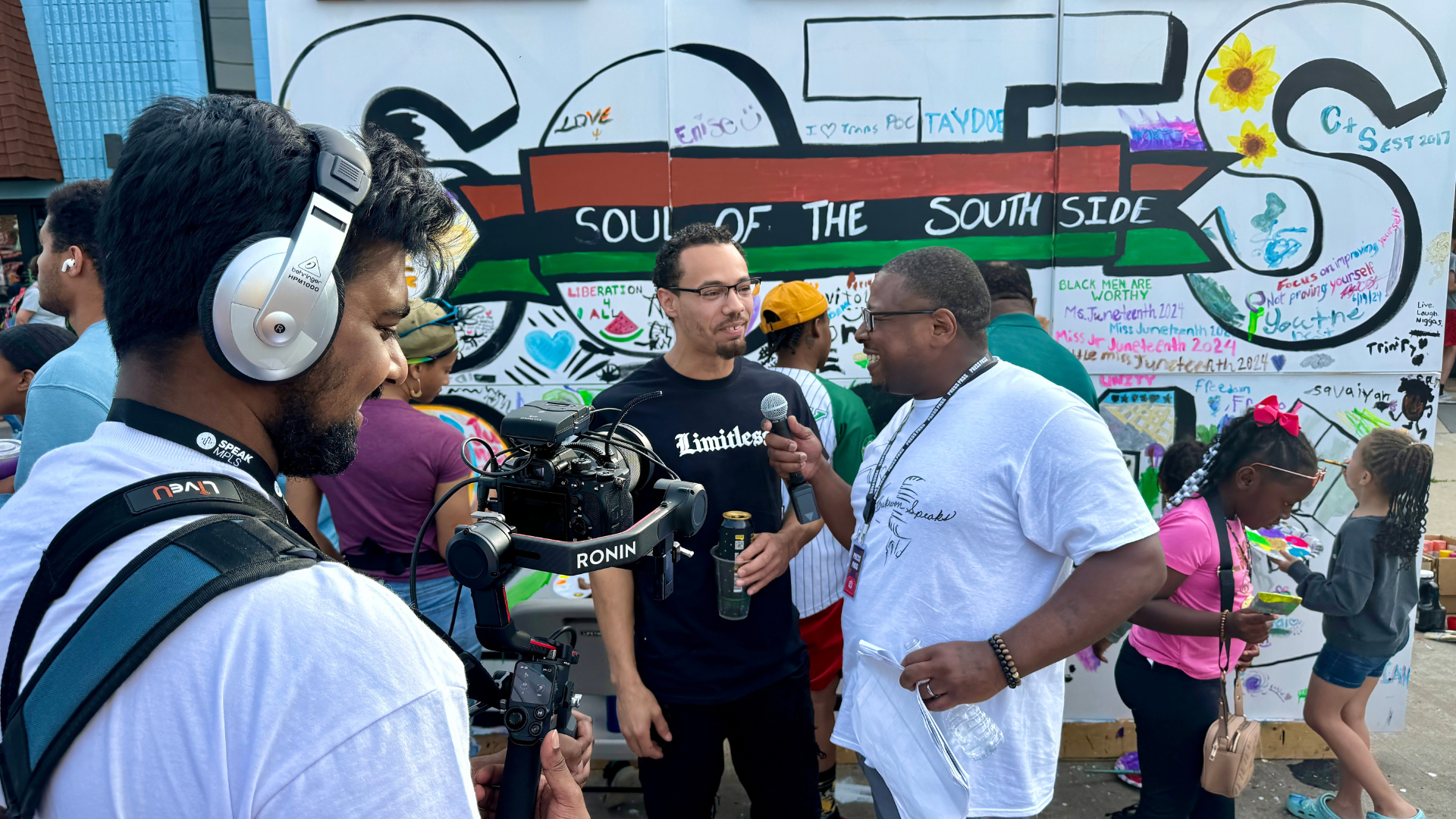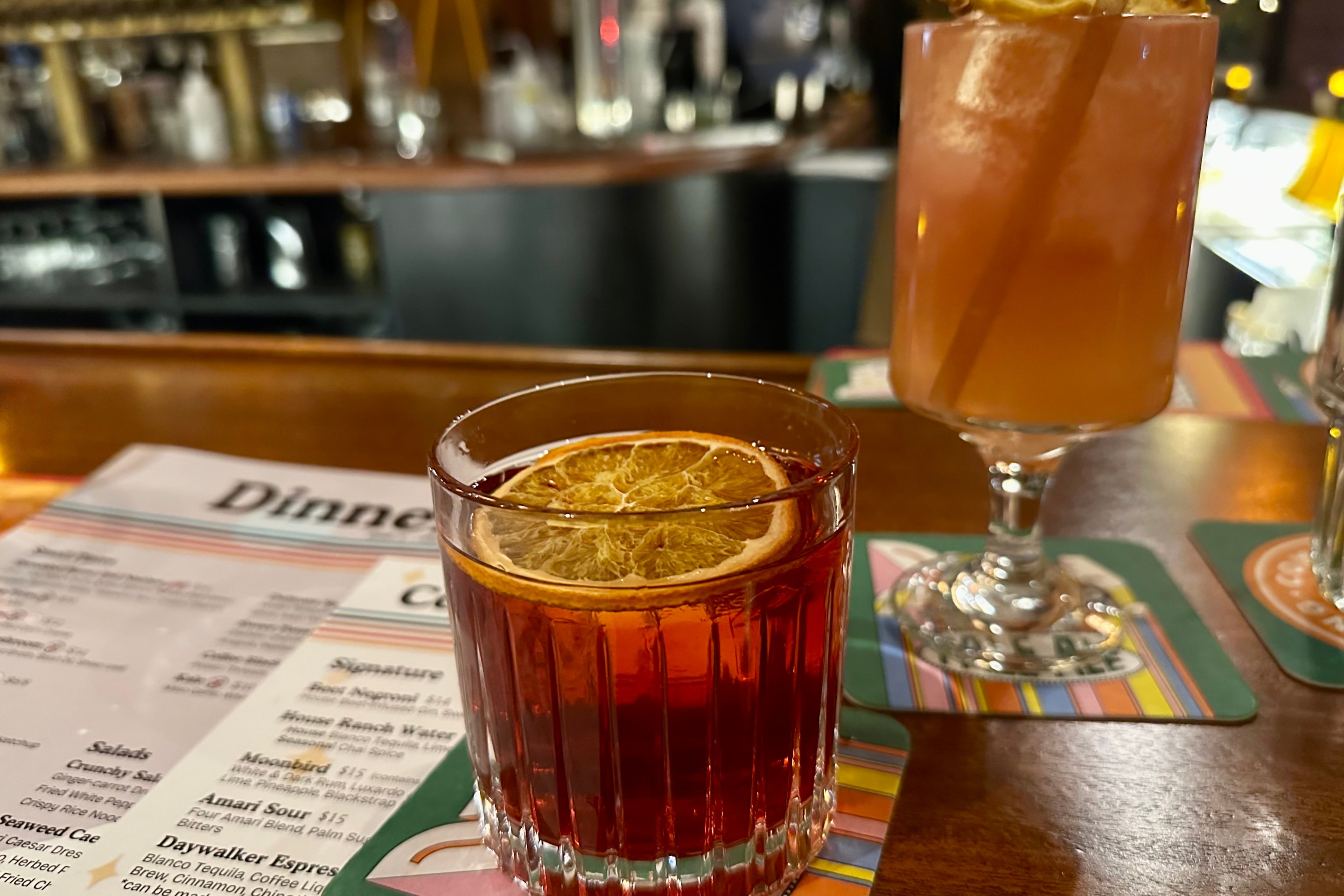Public access television is a hard thing to define, a beast that thrives on ineffability. It’s a citizen journalist interviewing folks at a protest. It’s a dad who faithfully records his kids’ high school volleyball games. It’s a roundtable of neighbors arguing about the city’s zoning laws. It’s a drag queen who wants to teach you how to cook like Julia Child.
It’s wild, it’s boring, it’s offensive, it’s educational. It was like this in the 1980s and it’s like this today.
In 2024, we live in a world of endless streaming services, hundreds of cable channels, and a mind-boggling amount of apps for content makers, from 30-second TikToks to four-hour YouTubes. And yet, somehow, public access television is still here, alive and thriving and doing its own thing.
It’s a Tuesday night and I’m at the Waterbury Building in Northeast to tour SPEAK MPLS’s space. (It’s actually one of two locations: The Jackson Street location boasts a TV studio space while the Nicollet Avenue spot in south Minneapolis tends to be more podcast-focused.) At the entrance are a few editing stations, a couch, some tables for coworking, and a kitchenette. Around the corner is the filming area, with tall black curtains, mounted studio cameras and lights, a desk for roundtables, and, if you feel like getting adventurous, a greenscreen. On the other side is a curtained room where shelves are stacked with equipment available to check out and take into the field—batteries, cords, smaller cameras, mics, and all kinds of other tech.
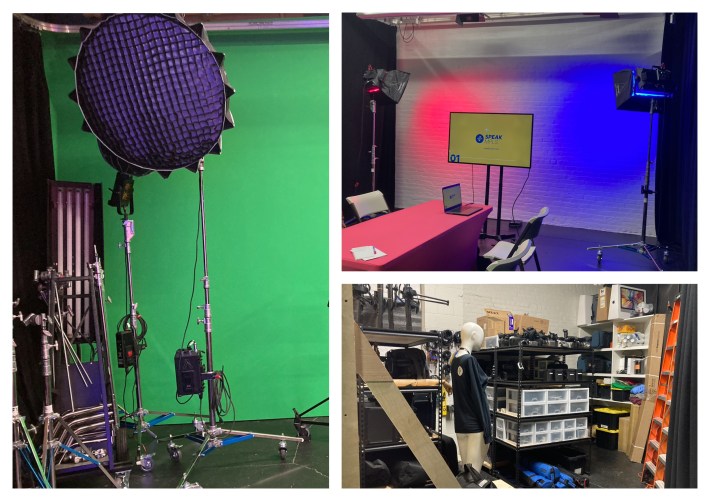
It all looks fresh and new—and it is! This is top-of-the-line gear. The kind of things content makers spend years saving up for before they can afford it.
“This shelf is usually full, I’d just like to say,” studio director Vageesha Dharmadasa warns me as I take a peek at what looks to be a bountiful amount of handheld cameras. “We have a lot of ‘em checked out.” We agree that that’s a good problem to have.
For decades, Minneapolis’s public access service was known as MTN. These days, it’s SPEAK MPLS. This new iteration started in 2019 when BFresh Productions founder Rebecca Smith noticed a call from the city for public access stewardship proposals. So she submitted a pitch. In February of 2020, her company’s proposal had been accepted.
“There's this big movement across the country to say, ‘We're not just public access TV, we're community media centers, and we do far more than just broadcast on the cable channels,’” says Smith, who is now CEO/director of SPEAK MPLS. “So our proposal reflected this reimagining of the future of media.”
And SPEAK MPLS really is best described as a community media center. Interested folks of all skill sets and abilities can pay a $20 month or $200 a year fee that grants them access to a plethora of resources. (There are also special rates/sliding scales for businesses, nonprofits, and people with limited budgets.) That includes the ability to regularly book time in one of their two studios, where they can use professional lighting and camera set ups to film. There are also work stations with software suites for editing, classes and workshops offered throughout the year, and your content (to which you retain the rights) airs on one of their TV channels—16, 17 (798 HD), and 75 (Comcast).
Since its launch, Smith reports that SPEAK MPLS has hosted “400 media class participants across 115 classes, facilitated more than 100,000 hours of equipment rentals, studio and edit suite bookings, and aired 3,855 hours of unique, first-run content.” They’ve also trained 77 youth via RYSE MPLS (more on that later). SPEAK MPLS is also a resource with many streams of revenue, sustained via PEG fees from the city, franchise fees from Comcast, membership payments, and donations. There's also grants; it was just announced this October that they're the recipient of a $100K grant from Press Forward.
For Heather Anderson, executive director of Advancing Equity Coalition, signing up for SPEAK MPLS was a no-brainer. For the past two years she has produced a podcast, Belonging in Classrooms, where teachers, students, and community members come together to share personal stories, experiences, and ideas on improving Minneapolis Public Schools.
“I'm really proud of the broad lens that we've been able to shine on urban districts,” she says. “We've had a fifth grader on to talk about being gay. We've had students on talking about what it's like to be seniors. We've had students who are failing talk about why they don't show up to class.”
Anderson also uses resources at SPEAK MPLS to recap school board meetings, in hopes of distilling news down to info that people can use. “I want to create accessibility for parents to know what's happening in our district without having to do the hours and hours of research and inside baseball that we do,” she says.
“In mainstream media, you're hearing a lot of the same government voices and, you know, the same people speaking,” Smith says when asked about community media as an outlet for different voices. “With public access, I think a lot of it is about representation of folks that are underrepresented in mainstream media, and it brings a balanced perspective.”
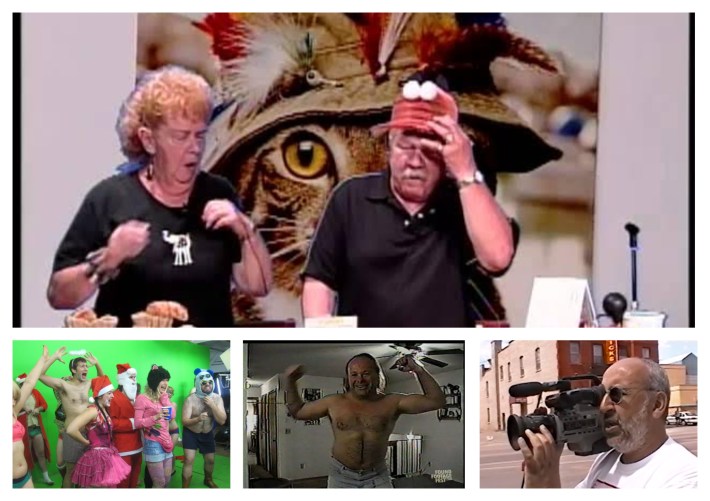
The Golden Era of Public Access
If public access television had a golden era in Minneapolis, it would probably be the ‘90s. Before Nextdoor, before Facebook dragged communities into comment section mud pits, before the internet really came along and smashed everything, MTN was thriving. Sometimes it was weird, sometimes it was offensive, sometimes it was boring, and other times it was amazing. It was public access, where the guy down the street can be a TV star.
For over a decade, Hamil Griffin-Cassidy was in the center of this chaos.
“I signed up for an adult evening class when I was 15, and bused down to St. Anthony Main and took the course that got me qualified to take out gear,” he says. “At some point, somebody knew [ubiquitous MTN personality] JC Bagdadi and said, ‘You want to work with this kid.’ So I was his intern, basically, from 1997 to 2014 or 2012.”
For Griffin-Cassidy, time at MTN wasn’t just a crash course in technology; it also introduced him to a world of different perspectives, personalities, and weirdos.
“Not only did you get fluent in video at a public access level of ability, but you were also thrown into an MTN member pool that was so psychotically diverse—and I mean diverse in ways that you don't want to run into some sections of it,” he jokes (but also probably means it). “I found that to be great. I felt like I was in a bus station of video producers.”
One example of an interesting—and groundbreaking—person at MTN's “bus station” was trans Vietnam veteran Paula Hare.
“Being trans wasn't spoken about in the same way it is now, right?” Griffin-Cassidy says. “I mean, she comes in, takes a class, and makes a show about their transitional journey and the VA… to me, the coolest thing in the world was just seeing people who were willing to sit down without a lot of fanfare, a single camera shot, and just talk about who they were.”
Eventually, Griffin-Cassidy began making his own programming, including a game show where he would play Scrabble against random folks who would call in for a turn. Freaky Deeky, another one of his programs, was a psychedelic romp of performance art, poetry, nonsense rambling, and mass hysteria. Frequent participant (and former City Pages theater critic) Jay Gabler wrote of its farewell show in 2012: "A lot of people had a hard time understanding Freaky Deeky, and sometimes there honestly wasn’t much to understand: a bunch of people running around in costumes while a caller recited, in monotone, the lyrics to a Bruce Springsteen song. But at least several times each episode, the stars aligned and something unforgettable happened."
This is the era that brought us Viva and Jerry, a charmingly hilarious married couple who would share their garage sale finds in-between airing their favorite country music videos; Mikenastics, a show featuring a dude in Coon Rapids who converted his home into a gymnasium (sorry, mikenasium) where he would tumble and do all kinds of crazy stunts, often shirtless and in jean shorts. There was Punk Wok, where punk rocker roommates would alternate between cooking up a meal in their kitchen and jamming out in their basement, and a knitting show where a group of women would film their politically charged, philosophical knitting circle convos at a local cafe.
This is also the era that brought us Fancy Ray McCloney.
“I got my real start on television through cable access,” the larger-than-life Twin Cities personality says of the early days of his prolific career, which has included standup comedy, endless product pitchman opportunities, TV, and more. “Cable access was the gateway for so many people who went on to television, both in front of the camera and also behind the camera.”
A little bit of Fancy Ray lore: In the ‘80s, McCloney made waves as a Little Richard impersonator and lip sync artist. After he won an episode of Puttin’ on the Hits performing Screamin’ Jay Hawkins’s “I Put a Spell On You,” he had an aha moment that TV could be a creative outlet for him. Enter Get Down With It, later known as The Fancy Ray Show, where he would interview local and national celebrities, perform comedy, and dress nice and real fancy.
“I was the host, but the star of the show was really Minneapolis,” he says. “The show was my chance to share wisdom and knowledge and my worldview, and sprinkle with a whole bunch of love. And in that process I learned how to write, produce, and direct television.”
Local guests included politician/radio host Barbara Carlson, Twin Cities gossip columnist C.J., MST3K alum Joel Hodgson, beloved restaurateur/chef Mama D, and Twins star Kirby Puckett. Soon, nationally known folks like Reverend Al Green, Carol Channing, Donnie Osmond, and Gloria Steinem were stopping by.
When LGBTQ+ activist Brian Coyle, Minneapolis’s first openly gay City Council member, announced that he had AIDS in 1991, he came on Fancy Ray’s show to spread his urgent message: fight HIV and practice safe sex.
“He said that my show had the people he wanted to reach,” McCloney says. “I'm dressing in my little flamboyant clothes, and he and I are going to fight this AIDS. Every time a guest was on, we did a dance together. So we did ‘Kung Fu Fighting,’ and had lots of laughs and lots of joy. It was a serious and wonderful interview. At the end I threw condoms out to the audience to practice safe sex.”
Six weeks later, Coyle died at just 47.
McCloney says that with the Coyle interview, he felt like he had done something he had never done before. And, when the time was right, he didn’t shy away from difficult content going forward. During the L.A. riots, for example, he hosted a discussion about race and social justice between a Ku Klux Klan member and anti-police brutality activist Spike Moss.
“There was this sense of urgency, almost like that feeling when George Floyd took off,” McCloney says. “There was this sense of immediate—something was happening in the air. And it was really, really a powerful show.”
That was over 20 years ago, and these programs, the people who made them, and the articles written about them in local publications are beginning to disappear. In recent years, SPEAK MPLS has started the sisyphean project of preserving their archives as much as possible. For the 40th anniversary party, Griffin-Cassidy was tasked with creating a remembrance segment that will air at the event.
“Unfortunately, I have to watch these tapes in real time,” he (kinda) jokes. “Basically I'm setting up and playing back tapes and calibrating color bars on a very old system… I am using skills I learned when I was 18 years old.”
It’s all very technical, but he says it’s also been an emotional experience.
“I probably cried every single shift,” he says, “either in happiness or for how grateful I was that I knew somebody. Many of these people are gone and like, I’d see a video of my old mentor [Bagdadi] shooting at our space at St. Anthony Main. I’m just remembering what that felt like emotionally, and knowing that that time is gone but it's still there in some ways.”
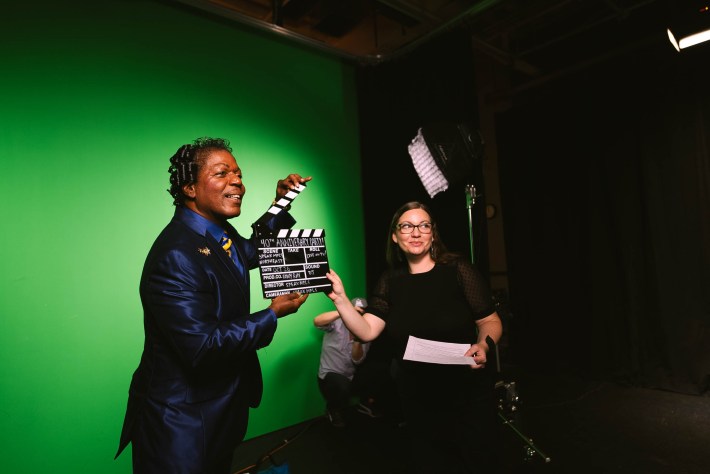
Broadcasting Into the Future
So where does public access television fit into a world where anyone can make a TikTok, YouTube video, or go viral on Twitter? Does it have a place in the 2024 content creation sphere?
Turns out some high school students are just as interested in public access television as Griffin-Cassidy was over 20 years ago—once they find out that it exists.
That’s where RYSE MPLS (Representing Youth Stories and Experiences in Minnesota), the youth media department of SPEAK MPLS, comes into play. Its programs have included two-week summer camps, winter classes, and after-school programs, each aimed at helping the next generation of producers, editors, and filmmakers get started via classes, workshops, mentorships, and access to professional-level equipment.
“Like pretty much everyone, I had my own dreams of starting a YouTube channel to put my voice out into the world,” says Sage, a senior at Roosevelt High School who's been participating in RYSE programs for three years now, via email. While they say they “didn't know much of anything about public access TV” when their mother suggested they look into RYSE, they were intrigued by what they found.
“It seemed interesting,” Sage says. “Sort of like a TV version of YouTube, where you could just [put up whatever] you wanted (to a certain extent) and let people watch it.”
The content that participants create is as varied as the creators themselves. A recent “cohort,” the name given to groups of participants each cycle, has yielded an incredible mix of work, including whimsical animations, a history of trans acceptance and persecution, a travelog-style piece about Kazakhstan (with a heavy side-eye at Borat), and a celebration of sports. Other participants tackled weighty topics like domestic violence, homelessness, addiction, Islamophobia, and the joys of attending a pow-wow. Much like all of the content that SPEAK MPLS has a hand in fostering, there’s no limit here.

The program is free, and once folks are accepted into it, they have access to training, workshops, and learning opportunities from professionals in the field. They also are able to use studio equipment, software, and the tech library, where they can check out things like cameras, mics, and podcast setups. But wait! There’s more! RYSE also helps students submit content to film festivals for free, and after the camp they receive a $300 stipend and a free membership to SPEAK MPLS for a year.
Sage admits that when they first looked into the program and its benefits, they thought there had to be a catch. “Having participated in the program for three years now, I'm just about sure they actually are true,” they say.
SPEAK MPLS will serve as many people’s entry point into careers in television, lifelong outlets for creativity, and a way to make connections beyond the comments section of a social media app. And, unlike YouTube, SPEAK MPLS is uncensored, unscreened, and completely open. Another benefit: There’s also no commercials, so you won’t see the same god awful Masterclass ad three times during one video.
“It’s definitely a place where, if you think about it, it's like a digital soapbox," says CEO Smith, referencing Public Access Television: America's Electronic Soapbox, a book by Laura R. Linder they keep in the office. “Really it's the concept that everybody has the right to their opinions and their beliefs, and public access is a space where people can freely express them, and there can be a dialog, a meaningful dialog, happening.”
“If you love the First Amendment, cable access is a giant in the First Amendment,” says Fancy Ray, who will host the 40th anniversary party on October 26. “It's about reaching people, showing your talent, sharing your stories, and the Minneapolis experience. It was in the past and it's right here today.”
